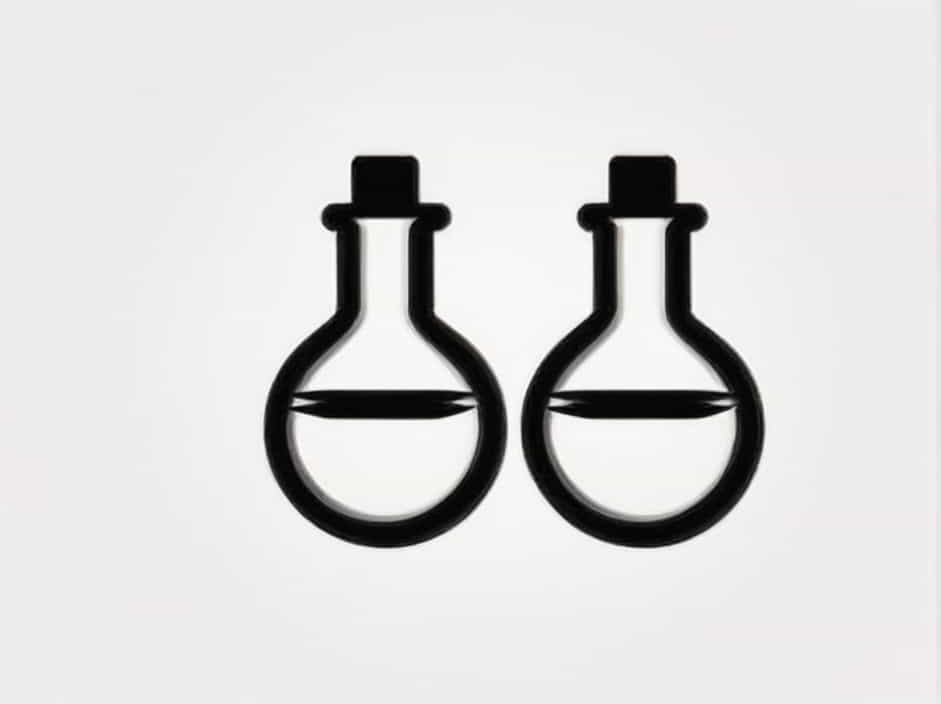The study of gases is essential in physics and chemistry. One common experimental setup involves two flasks connected by a stopcock. This system allows scientists to analyze gas expansion, pressure changes, and thermodynamic principles.
By understanding the movement of gas between two flasks, we can explore important gas laws, equilibrium states, and practical applications in industries and laboratories.
What is a Two-Flask System?
Definition and Components
A two-flask system consists of:
- Two sealed flasks containing gas at different pressures, volumes, or temperatures.
- A stopcock (valve) that controls gas flow between the flasks.
This setup is widely used in experiments on gas diffusion, pressure equalization, and thermodynamic equilibrium.
Common Conditions in the System
- One flask may contain gas, while the other is empty (vacuum).
- Both flasks may have gas but at different pressures.
- The flasks can be at different temperatures, affecting gas movement.
Gas Behavior When the Stopcock is Opened
When the stopcock is closed, the gases in each flask remain unchanged. However, when the stopcock is opened, the gas moves according to pressure, volume, and temperature differences.
Scenario 1: One Flask Contains Gas, the Other is a Vacuum
If one flask contains gas and the other is a vacuum, gas will rapidly expand into the empty flask. This is called free expansion and follows the principle:
Since there is no external work done, the temperature remains constant (for an ideal gas). However, for real gases, cooling may occur due to energy redistribution.
Scenario 2: Two Flasks with Different Pressures
If both flasks contain gas but at different pressures, gas will flow from high pressure to low pressure until equilibrium is reached. The final pressure can be calculated using the equation:
Here, P_f is the final equilibrium pressure, and V_1 and V_2 are the flask volumes.
Scenario 3: Two Flasks at Different Temperatures
If the flasks are at different temperatures, gas will move due to both pressure and thermal effects. The final state depends on heat transfer between the gases, which follows the equation:
where:
- P = Pressure
- V = Volume
- n = Number of moles
- R = Gas constant
- T = Temperature
If the system is thermally isolated, the total internal energy remains constant, leading to a final intermediate temperature.
Gas Laws Governing the Two-Flask System
Several fundamental gas laws explain the behavior of gases in this system:
1. Boyle’s Law (Pressure and Volume Relationship)
Boyle’s Law states:
This means when the stopcock is opened, gas expands, and the pressure decreases.
2. Charles’s Law (Temperature and Volume Relationship)
Charles’s Law states:
If gas moves between flasks at different temperatures, its volume adjusts accordingly.
3. Dalton’s Law (Partial Pressures)
When gases from two flasks mix, their partial pressures add up:
This explains the final pressure in the system after gas movement.
Real-World Applications of the Two-Flask System
1. Gas Storage and Distribution
- Used in compressed gas cylinders to transfer gas safely.
- Helps control gas movement in industries and laboratories.
2. Chemical Reactions in Controlled Environments
- Used in experiments requiring gas mixing.
- Helps study chemical equilibrium and reaction kinetics.
3. Industrial Processes
- Used in vacuum pumps and pressure regulation systems.
- Important for gas separation techniques in the chemical industry.
4. Environmental Science
- Helps model gas diffusion in the atmosphere.
- Used in air quality and pollution studies.
Experimental Analysis: Measuring Final Pressure
To determine the final pressure when gas moves between two flasks, use:
Example Calculation
Suppose:
- Flask 1: P_1 = 2 atm, V_1 = 1 L
- Flask 2: P_2 = 1 atm, V_2 = 2 L
The final pressure is:
This shows that the pressure equalizes between the flasks after opening the stopcock.
Common Questions About the Two-Flask System
1. What happens if one flask is much larger than the other?
If one flask is significantly larger, the gas will mostly expand into that flask, and the final pressure will be closer to the initial pressure of the larger flask.
2. Does the gas cool down after expansion?
For an ideal gas in free expansion, the temperature remains constant. However, in real gases, cooling can occur due to energy redistribution.
3. Can this system be used to measure gas diffusion rates?
Yes! The rate at which gases mix between two flasks helps study diffusion and effusion laws, such as Graham’s Law of Diffusion.
4. How does the molecular mass of the gas affect movement?
Lighter gases (e.g., helium) move faster than heavier gases (e.g., carbon dioxide), affecting the rate of pressure equalization.
A two-flask system with a stopcock is an excellent model for understanding gas expansion, pressure equalization, and thermodynamics. The behavior of gases in this setup follows fundamental gas laws such as Boyle’s Law, Charles’s Law, and Dalton’s Law.
This system has real-world applications in gas storage, chemical industries, and environmental science. By analyzing how gases move between two connected flasks, we gain deeper insight into gas behavior and thermodynamic principles.
